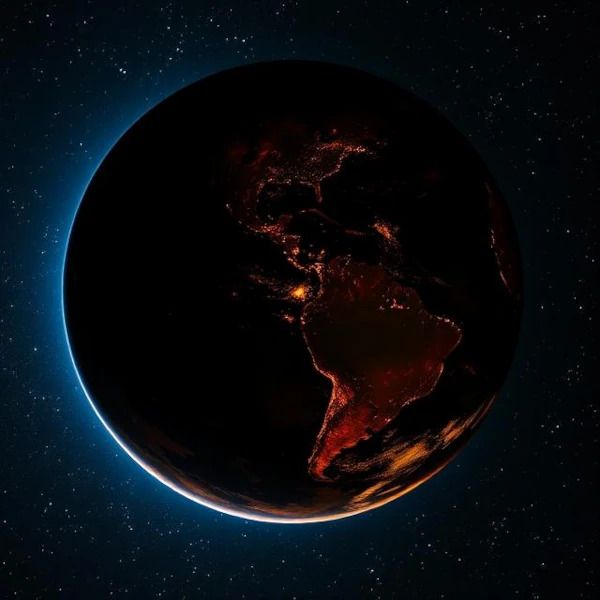
The internal radioactivity of the Earth is mainly due to the decay of radioactive isotopes. These decays produce alpha particles, beta particles, and gamma rays, thereby releasing thermal energy within the mantle and Earth's crust.
This energy, released by the radioactive decay of radioisotopes, plays a fundamental role in maintaining part of the Earth's mantle in a partially molten state, driving mantle convection that causes the movement of lithospheric plates. Without this internal heat source, plate tectonics, the formation of oceanic ridges, and volcanic activity would be greatly reduced, or even impossible in the long term.
The distribution of radioactive isotopes is not homogeneous: some elements, such as uranium and thorium, are concentrated in the continental crust, while potassium-40 is more present in the upper mantle. This heterogeneity influences the local distribution of heat flow and the geological dynamics of different regions of the Earth.
Viscosity is not uniform and depends strongly on depth, temperature, pressure, and mineralogical composition. For comparison, honey has a viscosity of about 10 Pa·s, so even the upper mantle is about 1018 times more viscous than honey, but it can still flow slowly over millions of years.
| Mantle zone | Depth (km) | Approximate viscosity (Pa·s) | Comment |
|---|---|---|---|
| Upper mantle | 0 – 410 | 1019 – 1021 | More ductile, allows convection on the scale of lithospheric plates |
| Intermediate mantle | 410 – 660 | 1021 – 1022 | Slightly higher viscosity, influences the transfer of material between upper and lower zones |
| Lower mantle | 660 – 2,890 | 1022 – 1024 | Very viscous, but over long timescales, it flows and drives global convection |
Sources: Karato & Wu (1993), Rheology of the Upper Mantle, Science 260: 771–778; Mitrovica & Forte (2004), Earth and Planetary Science Letters 225: 177–191.
Radiogenic energy generates internal heating that causes convective movements in the mantle. These movements drive the displacement of lithospheric plates, fueling plate tectonics and volcanic phenomena. The amount of heat produced can be estimated at about 20 TW for the entire Earth.
| Isotope | Half-life (years) | Relative abundance (%) | Heat flow (TW) | Comment |
|---|---|---|---|---|
| Uranium-238 | 4.47 × 109 | 0.3 | 8 | Main contributor in the mantle and crust |
| Thorium-232 | 1.41 × 1010 | 1 | 8 | Mostly present in the continental crust |
| Potassium-40 | 1.25 × 109 | 0.012 | 4 | Mainly contributes to the heat flow of the upper mantle |
Sources: Jaupart et al. (2007), Physics of the Earth and Planetary Interiors 160: 3–30; Turcotte & Schubert (2014), Geodynamics, 3rd edition.